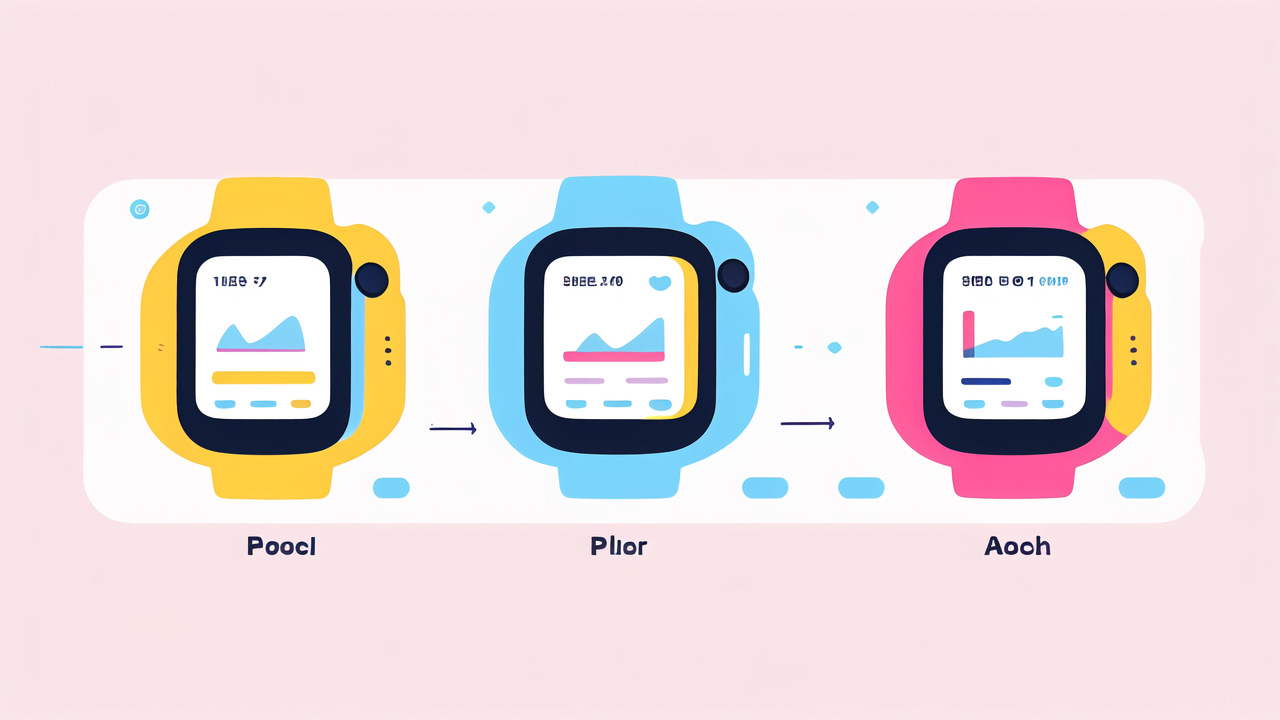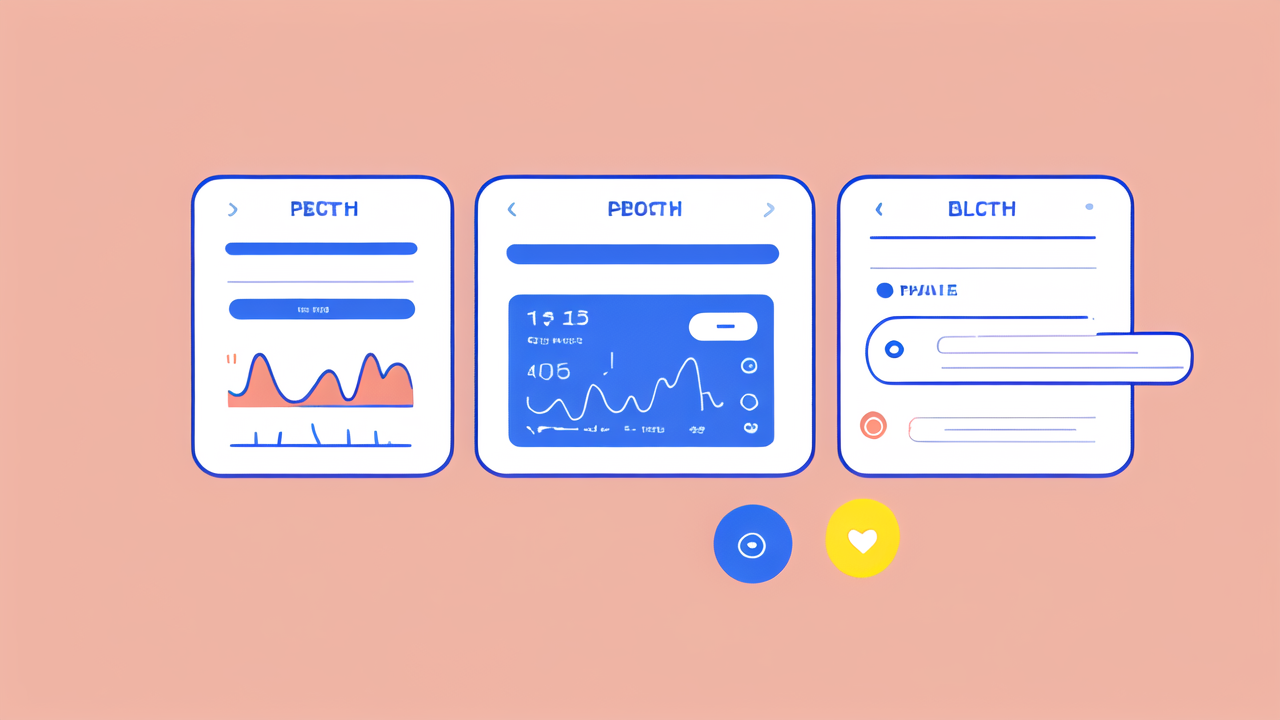Introduction to Pulse Watches in the Wearable Technology Landscape
What Are Pulse Watches?
Pulse watches are advanced wearable devices that monitor heart rate and other vital signs. They combine the functions of a traditional watch with health tracking features. These smart devices use sensors to measure pulse rate and other health metrics.

Pulse watches offer real-time data on physical activity and overall well-being. They're popular among fitness enthusiasts and health-conscious individuals. Many models can track steps, calories burned, and sleep patterns.
Some pulse watches can even detect irregular heartbeats or stress levels. They provide a comprehensive view of one's health status throughout the day. With sleek designs, they're both functional and fashionable accessories.
The Evolution of Wearable Technology: From Simple Wristwatches to Pulse Watches
Wearable technology has come a long way from simple timepieces. The journey began with basic mechanical watches in the 16th century. These early devices only told time and had no other functions.
In the 20th century, digital watches appeared, offering more accurate timekeeping. The late 1990s saw the first attempts at combining computers with wristwatches. These early smartwatches were bulky and had limited features.
The real breakthrough came in the 2010s with the rise of fitness trackers. These devices could count steps and estimate calories burned. Soon after, companies introduced smartwatches with touchscreens and apps.
Pulse watches emerged as a specialized category of smartwatches. They focused on health monitoring, especially heart rate tracking. Today's pulse watches offer a wide range of features beyond just pulse monitoring.
Key Features and Innovations of Pulse Watches
Advanced Sensor Technology in Pulse Watches
Pulse watches use cutting-edge sensor technology to monitor various health metrics. The most common sensor is the optical heart rate monitor. It uses LED lights to detect blood flow through the wrist.

Many pulse watches also include accelerometers and gyroscopes. These sensors track movement and can identify different types of physical activity. Some advanced models feature GPS for accurate distance tracking during outdoor exercises.
Newer pulse watches may have additional sensors for more health data. These can include:
- Pulse oximeters to measure blood oxygen levels
- ECG sensors for more detailed heart rhythm analysis
- Skin temperature sensors for fever detection
- Bioimpedance sensors for body composition analysis
These sensors work together to provide a comprehensive health profile. They allow users to track their fitness progress and overall well-being with precision.
Connectivity and Companion Apps: Expanding the Pulse Watch Experience
Pulse watches are not standalone devices. They rely on connectivity to enhance their functionality. Most pulse watches use Bluetooth to connect to smartphones. This allows for data syncing and notifications.
Companion apps are crucial for interpreting the data collected by pulse watches. These apps present information in easy-to-understand graphs and charts. They often provide insights and recommendations based on the user's health data.
Many pulse watches can connect to other devices and services. For example:
- Integration with fitness equipment for more accurate workout tracking
- Syncing with smart scales for comprehensive weight management
- Connecting to smart home devices for a seamless lifestyle experience
Some pulse watches offer cellular connectivity. This allows them to function independently from smartphones. Users can make calls, send messages, or stream music directly from their wrist.
Health and Wellness: The Core Benefits of Pulse Watches
The primary focus of pulse watches is to promote health and wellness. These devices offer several key benefits:
- Continuous heart rate monitoring: Users can track their pulse throughout the day and night. This helps identify patterns and potential health issues.
- Fitness tracking: Pulse watches can monitor workouts, count steps, and estimate calorie burn. This motivates users to stay active and reach their fitness goals.
- Sleep analysis: Many pulse watches track sleep duration and quality. This information can help improve sleep habits and overall health.
- Stress management: Some models can detect stress levels through heart rate variability. They may offer guided breathing exercises to help reduce stress.
- Early warning system: Advanced pulse watches can detect irregular heartbeats or other abnormalities. This can prompt users to seek medical attention if needed.
- Personalized health insights: By analyzing data over time, pulse watches can provide tailored health recommendations.
These benefits make pulse watches valuable tools for maintaining and improving overall health.
Navigating the Pulse Watch Market in the United States
Top Pulse Watches and Market Leaders
The U.S. pulse watch market is competitive, with several major players dominating the scene. Apple leads with its Apple Watch series, known for its sleek design and integration with iOS devices.

Fitbit, now part of Google, offers a range of pulse watches focused on fitness tracking. Their devices are popular for their long battery life and user-friendly interface.
Garmin targets outdoor enthusiasts and serious athletes with rugged, feature-rich pulse watches. They excel in GPS accuracy and advanced sports metrics.
Samsung's Galaxy Watch line provides strong competition in the Android-compatible market. These watches offer a good balance of smartwatch features and health tracking.
Other notable brands include:
- Polar, known for their precision in heart rate monitoring
- Withings, offering hybrid watches with a classic look
- Amazfit, providing budget-friendly options with impressive features
Each brand has its strengths, catering to different user needs and preferences.
Understanding Consumer Preferences for Pulse Watches
Consumer preferences in the pulse watch market vary widely. Some key factors that influence buying decisions include:
- Compatibility: Users often choose watches that work well with their smartphones.
- Battery life: Long-lasting batteries are a significant selling point for many consumers.
- Design: Some prefer sleek, modern looks, while others want more traditional watch styles.
- Health features: The range and accuracy of health tracking options are crucial for many buyers.
- Price: Pulse watches come in various price ranges, from budget to premium options.
- Ease of use: Intuitive interfaces and simple setup processes are highly valued.
- Brand reputation: Many consumers trust established brands with proven track records.
- Customization: The ability to change watch faces and bands appeals to many users.
Understanding these preferences helps manufacturers tailor their products to market demands.
Future Projections: What's Next for the Pulse Watch Industry?
The pulse watch industry is poised for continued growth and innovation. Several trends are likely to shape its future:
- Improved sensor accuracy: Future devices may offer medical-grade monitoring capabilities.
- Longer battery life: Advances in battery technology could extend usage time between charges.
- Non-invasive health monitoring: New sensors might track blood glucose or blood pressure without needles.
- AI-powered health insights: Machine learning could provide more personalized health recommendations.
- Integration with telehealth: Pulse watches may play a bigger role in remote patient monitoring.
- Enhanced data privacy: As health data becomes more sensitive, stronger security measures will be crucial.
- Sustainability: Eco-friendly materials and designs may become more prevalent.
- Specialized devices: We might see more pulse watches tailored for specific health conditions or sports.
These projections suggest a bright future for pulse watches in health and wellness technology.




Leave a comment
This site is protected by hCaptcha and the hCaptcha Privacy Policy and Terms of Service apply.